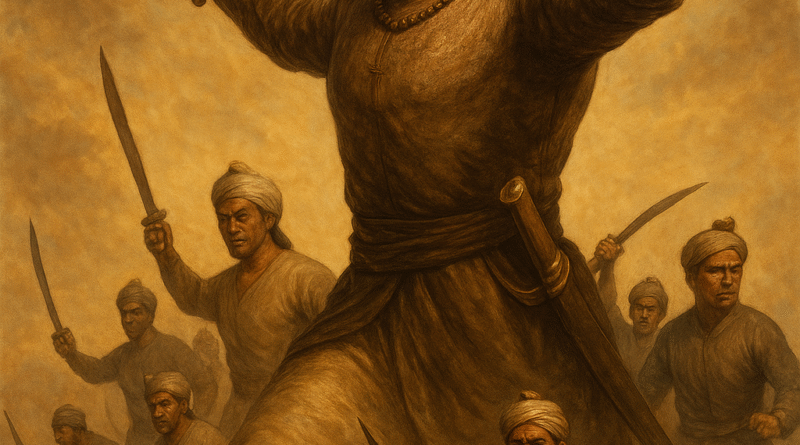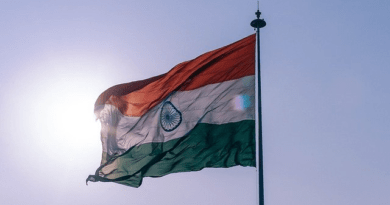Lachit Borphukan
Lachit Borphukan:
Life & Birth
Born on 24 November 1622 in Charaideo, Assam
Died on 25 April 1672
Youngest son of Momai Tamuli Borbarua (also known as Momai-tamuli), a high-ranking Ahom official
Early Positions
Started as Commander under the Ministry of State
Appointed as Ghora Barua (Superintendent of Royal Horses)
Later became Dolakasharia Barua (Superintendent of Guards/Commander of Household Guards)
Commanded Simulgarh Fort
In 1663 CE, appointed as Commander-in-Chief of Ahom Forces and Borphukan (viceroy with executive and judicial powers) by King Chakradhwaj Singha
Military Achievements
Successfully recaptured Guwahati from Mughal forces in summer 1667 CE
Prepared strategic fortifications on both banks of the Brahmaputra River with Prime Minister Atan Buagohain
Conducted detailed surveillance of war zones and passes around Guwahati
The Battle of Saraighat (March 1671)
Fought against Raja Ram Singh I of Jaipur under Emperor Aurangzeb’s command
Despite being outnumbered and facing superior Mughal forces, the Ahom army achieved a decisive victory
Employed guerrilla warfare, psychological tactics, naval brilliance, and terrain exploitation
Though gravely ill, Lachit commanded from a war boat and rallied his demoralized troops
His presence reignited morale, leading to fierce counterattack and Mughal retreat beyond the Manas River
Result: Last major Mughal attempt to invade Assam, securing Assam’s political independence
Character & Patriotism
Discovered negligence by his own maternal uncle in fortification work and beheaded him in the name of national duty, declaring “My uncle is not greater than my country”
Site of this act is known as Momai-kota Garh
Despite severe illness during battle, refused to retreat, declaring “If you want to flee, flee! I will fight till my last breath”
Legacy
Celebrated as a symbol of courage, patriotism, and military brilliance
National icon of Assam’s resistance to Mughal expansion
Lachit Divas celebrated annually on 24 November to honor his contributions
His military strategy and leadership remain studied examples of tactical excellence
Lachit Borphukan (November 24, 1622 – April 25, 1672) stands as one of India’s most celebrated military figures, remembered for his extraordinary leadership and the historic victory at the Battle of Saraighat that preserved Assam’s independence from Mughal expansion. His legacy represents courage, patriotism, and strategic brilliance that continues to inspire generations in contemporary Assam.
Early Life and Rise to Power
Born at Charaideo in Assam, Lachit was the son of Momai Tamuli Borbarua, who served as the first Borbarua (Governor of upper Assam and Commander-in-Chief) under the Ahom Kingdom. Unlike many military commanders, Lachit received comprehensive training in humanities, scriptures, and military sciences, preparing him for positions of authority.
Before his appointment as Supreme Commander, Lachit held several significant administrative and military positions. He served as Ghora Barua (Superintendent of Royal Horses), Dolakasharia Barua (Superintendent of Royal Household Guards), and Commander of the strategic Simulgarh Fort. These positions provided him with invaluable experience in military organization and governance. In 1663, when Swargadeo Chakradhwaj Singha ascended the throne, he recognized Lachit’s exceptional capabilities and appointed him as Borphukan (Ahom viceroy in the west) and Commander-in-Chief of the Ahom Army.
Administrative Achievements
As Borphukan, Lachit demonstrated remarkable administrative acumen beyond military prowess. He worked systematically to develop Lower Assam by establishing new villages, instituting craft classes for women, and conducting a comprehensive census of the population. These initiatives revealed his vision for comprehensive territorial development and social welfare, making him not merely a warrior but a visionary administrator.
Guwahati Campaign and Strategic Preparations
Recognizing the growing Mughal threat, King Chakradhwaj Singha refused to pay the full installment agreed upon in the Treaty of Ghilajharighat (1663) and instead instructed Lachit to prepare for military confrontation. By the summer of 1667, Lachit had completed his preparations and successfully recaptured Guwahati from Mughal occupation, establishing the Ahom presence in this strategically crucial region.
When Emperor Aurangzeb learned of this setback, he dispatched a massive force under Raja Ram Singh I of Amber to re-establish Mughal authority. Learning of this imminent invasion through his intelligence network, Lachit immediately initiated a comprehensive survey of Guwahati to transform it into a war zone, recognizing the region’s strategic importance due to its location on the Brahmaputra River and surrounding hills.
The Defining Victory: Battle of Saraighat (1671)
The Battle of Saraighat, fought in March 1671 on the Brahmaputra River, became Lachit Borphukan’s most celebrated achievement and a watershed moment in Indian history. The Mughal force was formidable: it consisted of 21 Rajput chiefs, 4,000 troopers, 1,500 gentlemen troopers, 500 artillerymen, and with Bengal reinforcements, eventually numbered 30,000 infantry, 18,000 Turkish cavalry, and 15,000 archers. In stark contrast, the Ahom forces were significantly smaller and less technologically advanced.
Despite these overwhelming odds, Lachit employed brilliant riverine warfare tactics, guerrilla strategies, psychological warfare, and superior military intelligence. His smaller, more agile boats strategically encircled the larger Mughal vessels, turning the river itself into a weapon. The transformation of Guwahati into a war zone meant the Mughals were lured into unfavorable terrain where Ahom advantages could be maximized.
A defining moment came when, despite being gravely ill, Lachit rose from his sickbed at Itakhuli fort and arrived on the battlefield. His presence galvanized demoralized troops, and according to historical accounts, he declared: “If you want to flee, flee! I will fight till my last breath.” This act of personal courage and absolute commitment reignited Ahom morale and inspired fierce resistance. The Ahom forces launched a devastating counterattack, forcing the Mughal army to retreat beyond the Manas River—the western boundary of the Ahom Kingdom.
A Patriot Above Personal Ties
Lachit’s patriotism transcended familial bonds in a manner that defined his character. During fortification preparations before the final battle, he discovered that work was being delayed due to negligence by his maternal uncle. In a symbolic act demonstrating absolute national duty, Lachit ordered his uncle’s execution, declaring that his uncle was not greater than his country. The site became known as Momai-kota Garh, standing as an eternal reminder of his unwavering commitment to Assam’s independence.
Legacy and Commemoration
Lachit died in April 1672, approximately one year after his greatest victory, succumbing to the illness that had plagued him during the Battle of Saraighat. His mortal remains were preserved at Lachit Maidam in Hoolungapara, 16 km from Jorhat, which was constructed in 1672 by Swargadeo Udayaditya Singha.
Every year on November 24, Assam celebrates Lachit Divas to honor his extraordinary contributions to the state. Additionally, recognizing his 400th birth anniversary, a war memorial featuring a 100-foot-long Hengdang (the traditional Ahom sword) was constructed—the very sword that King Chakradhwaj Singha had presented to Lachit as a symbol of distinction.
Discover more from Simplified UPSC
Subscribe to get the latest posts sent to your email.

